Why are hallmarks used?
Common types of hallmarks
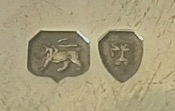
The left-hand hallmark here is the lion passant


Outside of London, the best-known British city hallmarks are the following:
- a ship’s anchor for Birmingham
- a sword between three wheatsheaves for Chester
- a three-towered castle for Edinburgh
- a tree with a fish, a bird and a bell for Glasgow
- a crown for Sheffield
Once you have identified the town mark, the next hallmark to look for is the date mark, used to ascertain when the piece was assayed. The date mark appears as a single letter on a shield background. As each assay office had its own unique sequences of date letters, and because fonts and shields were changed for each cycle, it is very important to pay attention to the sometimes minimal differences when reading a date hallmark.
Finally, the last hallmark to look for in British silverware is the sponsor’s mark, which indicates the workshop where the piece was made.
In the second image below, we can see the hallmarks stamped to the interior of a George IV silver snuff box. The stamped hallmarks are in very fine condition as they have not been subject to polishing and general surface wear. The marks are clearly defined and allow us to glean some very useful information about this box: we can see the lion passant, meaning that the piece is made of sterling silver, the letter “D” indicating that it was assayed in 1827, the anchor which is the town mark for the city of Birmingham and finally the sponsor’s mark, which in this case is for the workshop of Joseph Willmore.
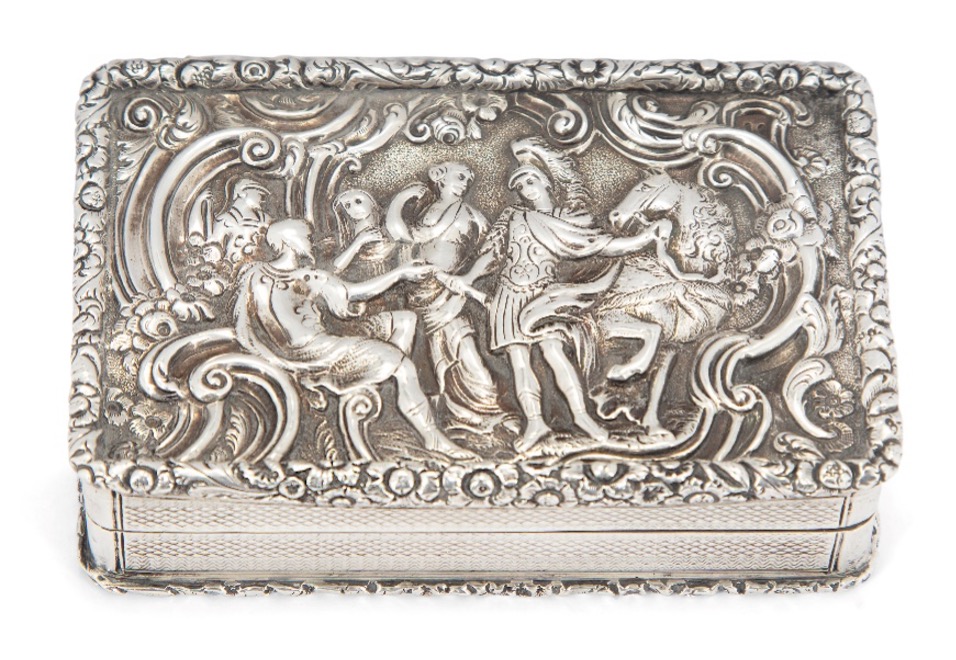
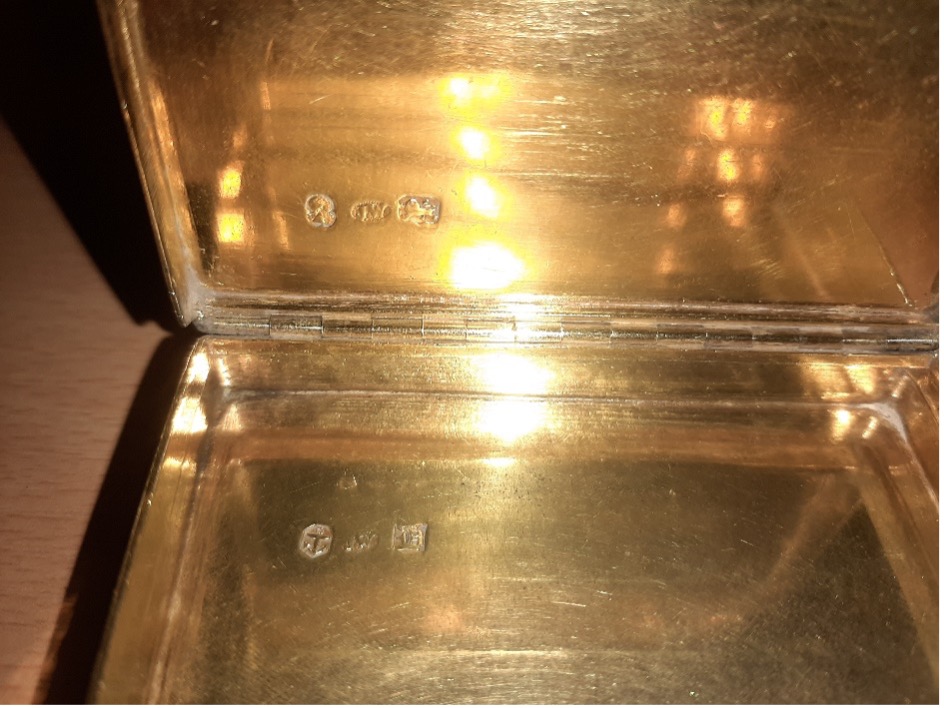
Other marks
In 1784 duty marks began to be applied on silver items as a tax to pay for the War with America. The tax was collected by the assay office and to show that it had been paid, the duty mark was applied to the piece. The mark took the form of the sovereign’s head. The second image below shows the hallmarks stamped to the underside of a Victorian silver gilt christening cup. Among these marks, the duty mark is represented by the profile of Queen Victoria facing left. The tax lasted until 1890, so after this date the duty mark was no longer punched onto British silverware.
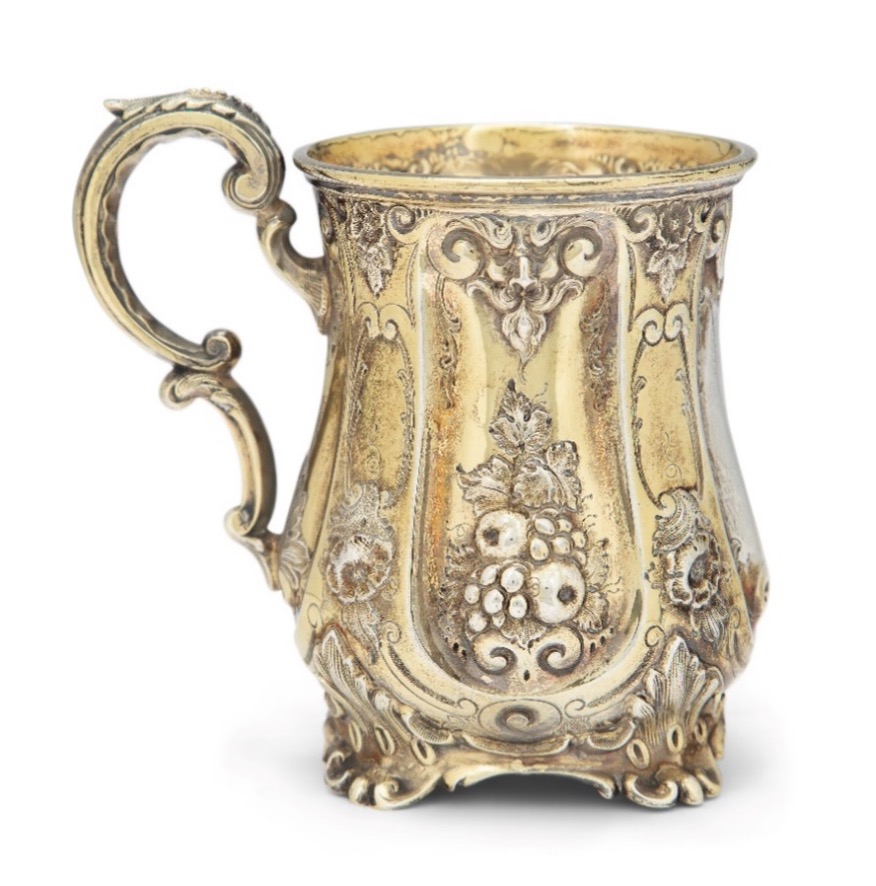
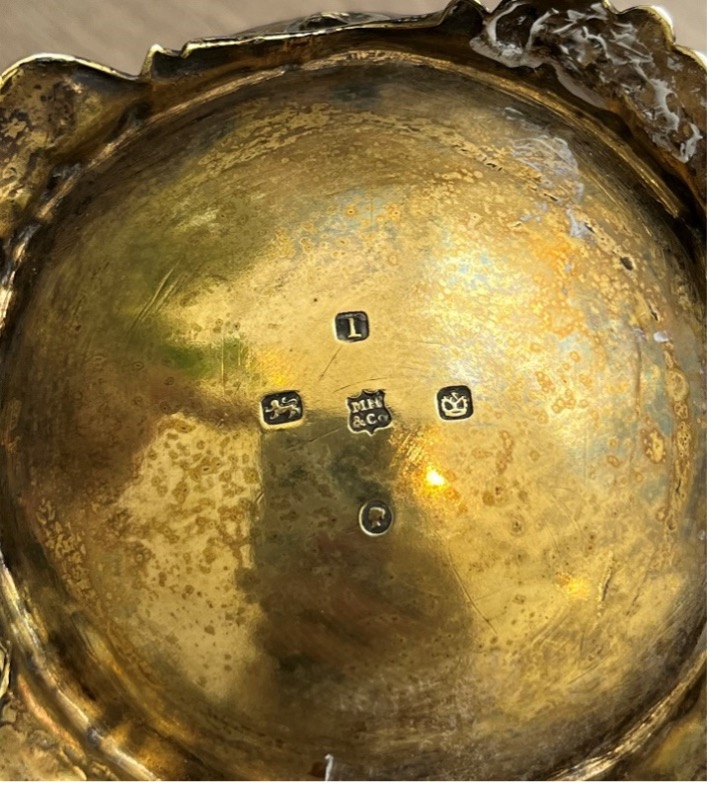
Other marks important when it comes to British silverware are import marks. In 1842 it became illegal to import gold or silver wares into Great Britain and Ireland unless they had been assayed at a British office. Imported pieces can show the foreign mark ‘F’ in addition to the British hallmarks or a new symbol, if they were imported after 1904. The second image below shows the import marks stamped to the feathers of a German silver model of a turkey. The import marks are for Berthold Muller, London, 1973, and include the mark 925 for the sterling standard as well.
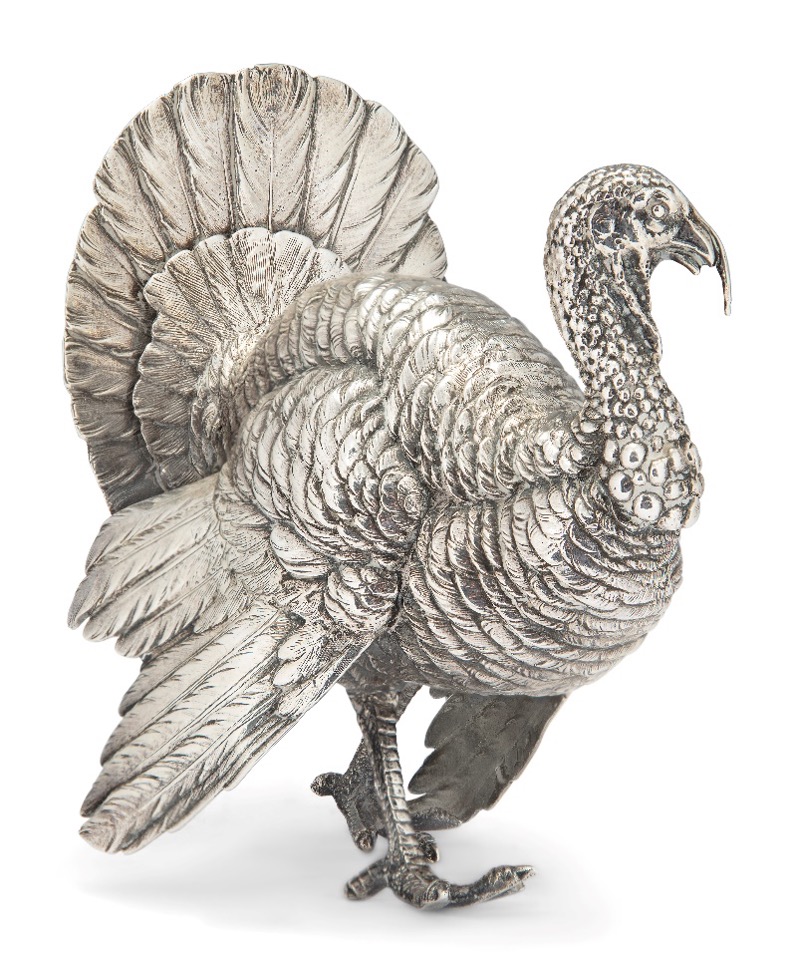
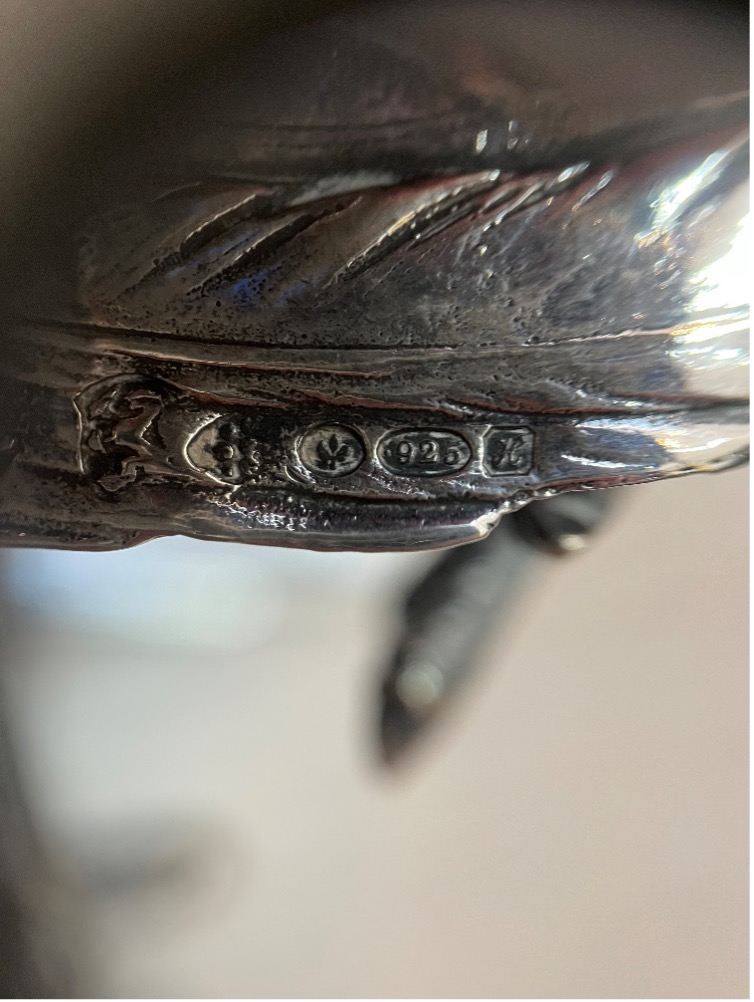
What about silver plate?
Sheffield plate and electroplate are made to look like silver but lack the inherent value of the precious metal. In the case of Sheffield plate, sterling silver is fused together with copper, while the electroplating process - perfected by Elkington & Co. in Birmingham – entails coating a metal object with a layer of pure silver.
Neither Sheffield plate nor electroplated items can be called silver, and for this reason they do not show true silver hallmarks. However, they can be stamped with marks used by manufacturers to simulate silver hallmarks. The most frequently encountered example of these marks is the acronym “EPNS”, which stands for Electro Plated Nickel Silver. The individual letters are sometimes placed in shields to look like a genuine set of silver marks.
Inspecting hallmarks and being able to decode them is essential to the understanding of British silverware. Should you wish to learn more about a piece of silverware that you own, we would be more than happy to help. Our silver specialists offer valuation services for both British and Continental silver so please do contact us if you would like our help in understanding the origin, or determining the value of your silver.





